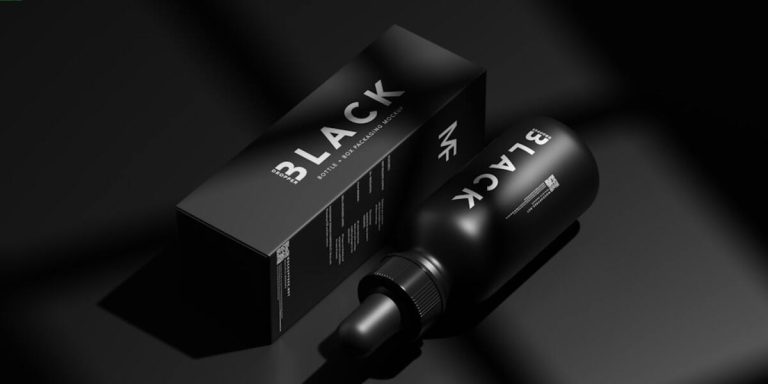Hair Regrowth Using Stem Cells: A New Frontier in Baldness Treatment
Hair regrowth using stem cells is turning heads in the medical community, poised as a promising solution for hair loss sufferers worldwide. This innovative method leverages the power of science and technology to address baldness at its very root—literally—by harnessing our body’s innate potential to regenerate.
This shift towards cell-based treatment protocols marks a new frontier in baldness treatments. Stem cells provide an effective way of replenishing hair by stimulating dormant follicles, offering hope for millions grappling with thinning strands and receding hairlines. The ongoing research points not just towards halting but reversing patterned baldness altogether—an impressive leap forward from current available options.
Did you know?
Did you know? Researchers at the Sanford Burnham Prebys Medical Discovery Institute have developed a method to generate natural-looking hair using stem cells – potentially providing a new solution for those suffering from baldness.
Understanding Hair Regrowth Using Stem Cells
Stem cell technology, hailed as the cutting-edge development of modern science, has been revolutionizing numerous medical treatments including hair regrowth. The innovative approach combating baldness involves harnessing these unique cells in a bid to not just restore but also rejuvenate lost follicles. It’s crucial here that we understand stem cells are undifferentiated biological units having potential to morph and divide into various types of functional body cells.
In terms of addressing hair loss problems, researchers have specifically identified two kinds – epithelial stem cells and dermal papilla cells – instrumental in promoting new growth cycles while enhancing existing ones too. Epithelial stem cells aid primarily in forming new follicle structures whereas dermal papilla dictate the thickness or thinness factor for each strand generated.
The method stimulates dormant follicles causing them to embark upon fresh production cycles thus contributing towards denser coverage overall. Intriguingly enough, this procedure is nearly non-invasive producing long-lasting solutions unlike many other conventional methods promising similar outcomes with limited effectiveness tenure only by 2023.
The Science Behind Stem Cell Therapy for Hair Loss
The human body is a complex machine, continually producing new cells to replace old ones in various tissues. In the quest for hair regrowth solutions, scientists have turned their attention to these intrinsic cellular factories – stem cells.
Stem cell therapy presents an exciting avenue towards tackling hair loss. The science behind this approach revolves around understanding how follicles work and applying that knowledge innovatively.
Hair follicles are much more than they appear on the surface of our skin; they are mini-organisms within themselves with a life cycle comprising growth (anagen), regression (catagen), rest (telogen) phases.
At any given time, each strand of your hair could be in one of these stages—explaining why we don’t suddenly become bald during periods of extreme stress or illness – it’s a gradual process involving many thousands of individual strands operating independently.
A pivotal role player governing this entire lifecycle is dermal papilla – clusters at the base where nutrients get delivered via blood vessels feeding into them. Dermal papillae also house special kind “hair matrix” stem cells responsible for creating fresh keratinocytes—the primary component forming our actual hairs.
Evaluating the Effectiveness of Stem Cell Treatments in Promoting Hair Growth
The recent advancements in hair regrowth treatments have been nothing short of groundbreaking, with stem cell therapy showing promising results. The effectiveness of these new-age therapies like “hair regrowth using stem cells” is what we’ll analyze and evaluate here.
Stem cells are unique because they stimulate the body to regenerate lost or damaged tissues naturally—an attribute that’s proving beneficial for patients dealing with consistent hair loss issues. So how effective are these procedures? To better answer this question, let’s delve into some vital data points.
Clinical trials don’t lie—according to various reports published in 2023; several clinical studies confirm significant improvement in hair density after a successful course of stem cell therapy for hair regeneration. Patients who previously struggled with other forms of treatment reported substantial progress within just six months from starting their respective courses!
Even though it may seem magical, the science behind it isn’t too complicated—the transplanted healthy follicular stems initiate cellular activities leading towards accelerated growth cycles enabling quicker restoration processes than typical timeframes experienced by our bodies normally.
However, keep note that results can vary significantly based on individual health history and adherence to post-treatment guidelines laid down by professionals handling your case.
Moreover,further exploratory research continues unveiling more potential benefits coming alongside such breakthroughs preceding expectations around copious amounts concerning rate as well life quality over affected individuals seeking solutions against continuous balding patterns presenting themselves throughout different stages across varying age brackets globally now more than ever before!
Advancements in Hair Restoration: The Role of Stem Cells
In the sphere of hair restoration, an exciting development has emerged in recent years. The application of stem cells is becoming a game changer, offering promising solutions for those struggling with hair loss and baldness. Scientists are studying the potential uses of these powerhouse cells to understand how they can promote hair regrowth.
The science behind this process is fascinating. Studies show that when injected into scalp tissues, healthy stem cells can stimulate dormant or inactive follicles to reenter their growth phase again – essentially kick-starting your natural growth pattern that may have slowed down or completely stopped due to age or other causes. This innovative approach targets the root cause (quite literally) by rejuvenating failing follicles instead of merely masking symptoms.
Stem cell therapy for hair regrowth offers several advantages over more traditional methods like transplant surgery which could be invasive and painful experiences accompanied with long recovery periods. Stem cell treatments promise minimal discomfort in contrast as it’s non-surgical; plus it lends itself well towards personalization since treatment dosage would depend upon individual requirements making every procedure truly tailored and effective.
It’s only 2023 now, but looking ahead there are high expectations from stem cell research in providing ground-breaking advancements within Hair Regrowth sciences – all aimed at helping individuals regain not just their crowning glory but also self-confidence lost through progressive balding issues!
Breakthrough Techniques in Harvesting and Utilizing Stem Cells for Hair Recovery
Recent breakthroughs in the world of hair restoration are making waves. One such promising development is harvesting and utilizing stem cells for achieving robust hair regrowth.
Stem cells have shown immense potential when it comes to treating various bodily ailments including baldness. These miraculous cells possess an innate ability to convert into any cell type that our body requires, granting them a unique place in medical science.
Importantly, not all stem cells used are alike; scientists specifically target adult stem-cells found abundantly within our skin layers or adipose tissues due to their aptitude towards generating real change at cellular level.
Once harvested meticulously with scientific precision from subject’s own fat deposits (typically thigh region), bio-banks then grow these extracted samples in culture mediums over a few weeks until sufficient numbers are achieved. This preparation phase gives rise to millions of new purpose-driven ‘daughter’ units ready for transplanting back onto patient’s scalp via micro-injections without fear of rejections since they’re host-derived.
Success Stories: Real-life Results from Stem Cell-Based Hair Regrowth Procedures
Advancements in hair restoration technology have brought about revolutionary changes, and one significant breakthrough has been the advent of stem cell procedures. These modern interventions offer real hope for countless people struggling with hair loss across the globe. Let’s dive into some success stories that articulate how patients have experienced incredible results from stem-cell-based regrowth therapies.
First off is David, a 45-year-old man who started experiencing male pattern baldness at an early age. He tried various over-the-counter treatments but saw minimal improvement to his rapidly thinning mane. Tired of unsuccessful attempts, he decided to go ahead with a procedure incorporating the use of stem cells for hair regrowth after reading promising research on it.
Post-procedure factors such as bi-weekly follow-ups and regular maintenance played key roles in David’s successful recovery process as they ensured proper care was taken during post-treatment phases including potential adjustments needed based on observed progress.
Next comes Julie- a software professional whose hectic lifestyle had led her down the road towards severe stress-induced alopecia by turning 30. She chose Stem Cell Therapy hoping it could provide more permanent solutions than traditional methods she’d used previously which offered only temporary relief.
After undergoing treatment utilizing stem cells specifically targeted at areas suffering intense shedding; there were noticeable improvements within just six months! Today she sports healthy voluminous locks thanks much so this innovative approach made possible through advancements science now offers!
Navigating the World of STEM Cells and Hair Regeneration
In the constantly advancing world of science and technology, we’re witnessing revolutionary strides in hair regeneration techniques. One method that has gained substantial recognition is Stem Cell Therapy for Hair Regrowth. Emerging as a promising solution to receding hairlines and thinning manes, this innovative approach harnesses the power of stem cells – unassigned cells with the unique ability to regenerate into specialised cell types within our bodies.
Harnessing these miraculous entities in ceasing hair loss and promoting new growth might sound like sci-fi storyline but it’s becoming an attainable reality. In essence, stem cell therapy involves extracting healthy follicle stem cells from abundant areas on your scalp or body (like at the back of your head), cultivating them under lab conditions until they multiply substantially, then injecting those enhanced cells into balding patches on your scalp.
Stem Cell Therapy for Hair Regrowth takes a proactive defense against hair loss. It addresses root issues early on and reinstates dormant follicles before potential escalation can occur. This regenerative procedure proves more effective than:
- DHT blocking shampoos, which combat high levels of dihydrotestosterone after production.
- Minoxidil, which stimulates blood flow only after a reduction has already occurred.
Unlike traditional methods that wage war against symptoms post-onset, Stem Cell Therapy acts before damage occurs.
Given all potential benefits paired with advancements happening each day in this arena—hair regrowth using ‘stem’ way may just be future-proof answer countless people are searching for their thinning crowns!
How to Choose a Reputable Clinic for Stem Cell Therapy for Baldness
Choosing a reputable clinic for stem cell therapy for hair regrowth isn’t something one should rush. It’s vital to be well-informed and consider several factors before diving into this major decision.
The first step is doing extensive research about potential clinics that offer the service of “hair regrowth using stem cells”. The internet has made information readily accessible, so take advantage of it. Read reviews, look at success stories and delve deep into each clinic’s credibility.
Next, evaluate the experience level of both the clinic and its practitioners on handling such treatments. More years in practice often translates from more knowledge about effectively treating baldness with stem cells – though newer establishments could also possess revolutionary techniques or equipment relevant as per 2023’s medical advancements.
Understand the specific type of procedure you will undergo during your treatment session: Will the process extract adult autologous (your own) stem cells, or will it use allogeneic (someone else’s) stem cells? Knowing these details helps you comprehend the risks involved and anticipate the benefits after successful sessions. This knowledge enables you to make smarter decisions when choosing an establishment offering hair regrowth services through advanced scientific methods.
Potential Side Effects and Considerations Before Undergoing a Stem-Cell Procedure
While hair regrowth using stem cells is a revolutionary method that has gained traction in 2023, it’s prudent to be aware of the possible side effects and considerations before opting for this treatment. This section will delve into these aspects, equipping you with all necessary information.
To start with, remember that every medical procedure carries some level of risk and stem cell therapy isn’t an exception. There might be minor reactions at the point where the injection was administered – redness or discomfort are common complaints post-treatment.
Also noteworthy is what doctors call “graft versus host” disease,” which can occur if donor-derived stem cells reject your body tissues. Although rare during autologous procedures (where one’s own cells are used), potential patients should still keep tabs on this aspect.
Furthermore, as exciting and promising as science makes it sound today, research surrounding its long term implications remains ongoing— there’s no guarantee yet whether results obtained would persist forever without additional treatments needed throughout life span .
Conclusion
With the continual advancements in science and technology, “hair regrowth using stem cells” is just a glimpse into the future of baldness treatment. This novel approach has expanded horizons for those seeking effective solutions to hair loss problems and opened up possibilities full of hope.
We encourage you to explore further on this intriguing topic right here on our website. You will find an abundance of information that keeps pace with current developments such as these, making it easier for you to understand your options when it comes down to Hair Regrowth techniques. So why wait?
Take charge today and start your journey towards understanding hair health better!







